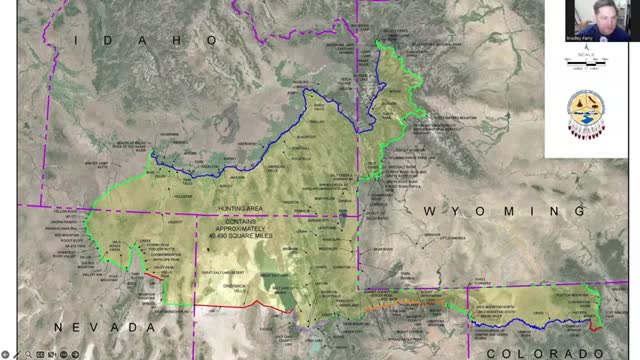Uncovering the Lost Maps of Utah's Indigenous Tribes
August 23, 2024 | Utah Libraries and History, State Agencies, Organizations, Utah Executive Branch, Utah
This article was created by AI summarizing key points discussed. AI makes mistakes, so for full details and context, please refer to the video of the full meeting. Please report any errors so we can fix them. Report an error »

In a recent government meeting, discussions centered on historical land treaties and the mapping of indigenous territories in Utah, highlighting the significant changes in land use and ownership since the 1860s. The meeting featured a presentation on the treaties that established boundaries for various Native American tribes, including the northwestern Shoshones and the Bannocks, as well as the impact of these treaties on current land designations.
The historical context was illustrated through maps, including the Warren Angus Ferris map from 1836, which depicted the Great Salt Lake area and its surroundings. The presentation emphasized the importance of these maps in understanding the traditional territories of tribes such as the Shoshone and Ute, and how these areas were utilized for resources like water and buffalo.
Participants noted the transformation of the region, particularly the renaming of areas by Mormon pioneers in 1877, which shifted the identity of the land from its original names to reflect new settlements. The discussion also touched on the ecological changes in the Great Salt Lake, comparing its historical state to its current condition.
Overall, the meeting underscored the need for recognition of indigenous histories and the ongoing implications of historical treaties on contemporary land use and cultural identity in Utah.
The historical context was illustrated through maps, including the Warren Angus Ferris map from 1836, which depicted the Great Salt Lake area and its surroundings. The presentation emphasized the importance of these maps in understanding the traditional territories of tribes such as the Shoshone and Ute, and how these areas were utilized for resources like water and buffalo.
Participants noted the transformation of the region, particularly the renaming of areas by Mormon pioneers in 1877, which shifted the identity of the land from its original names to reflect new settlements. The discussion also touched on the ecological changes in the Great Salt Lake, comparing its historical state to its current condition.
Overall, the meeting underscored the need for recognition of indigenous histories and the ongoing implications of historical treaties on contemporary land use and cultural identity in Utah.
View full meeting
This article is based on a recent meeting—watch the full video and explore the complete transcript for deeper insights into the discussion.
View full meeting

